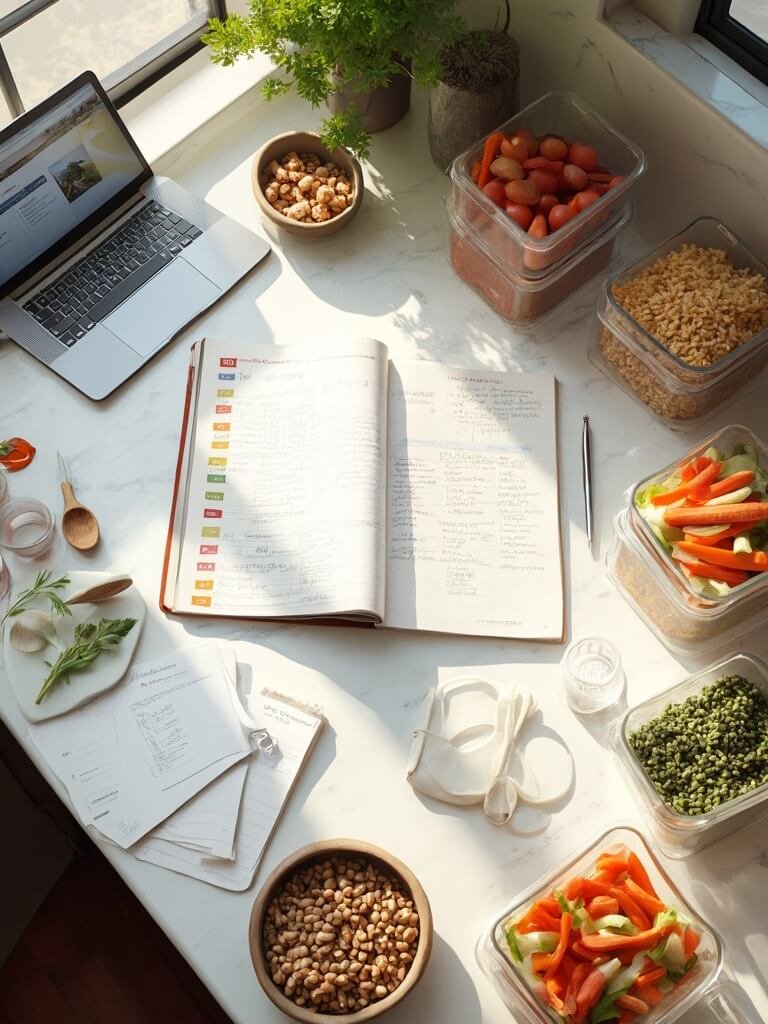Comprehensive Monthly Meal Planning: Your Complete Guide to a Full Year of Budget-Friendly Family Meals
Monthly meal planning transforms your kitchen chaos into organized efficiency, saving both money and sanity throughout the year.
Let me guess – you’re standing in your kitchen at 5 PM, staring into the fridge, wondering what on earth to make for dinner again.
Your grocery bills keep climbing, you’re throwing away wilted vegetables, and your family’s getting tired of the same five meals on rotation.
I’ve been exactly where you are.
When I started EatHealthier.co.uk, I was drowning in meal planning overwhelm, spending far too much on groceries, and feeling like I was failing my family every single dinnertime.
That’s when I discovered the magic of monthly meal planning – not just weekly planning, but thinking in full month cycles.
This system changed everything for my family of four.
We went from spending £300+ per month on groceries to consistently staying under £200, while actually eating more variety than ever before.
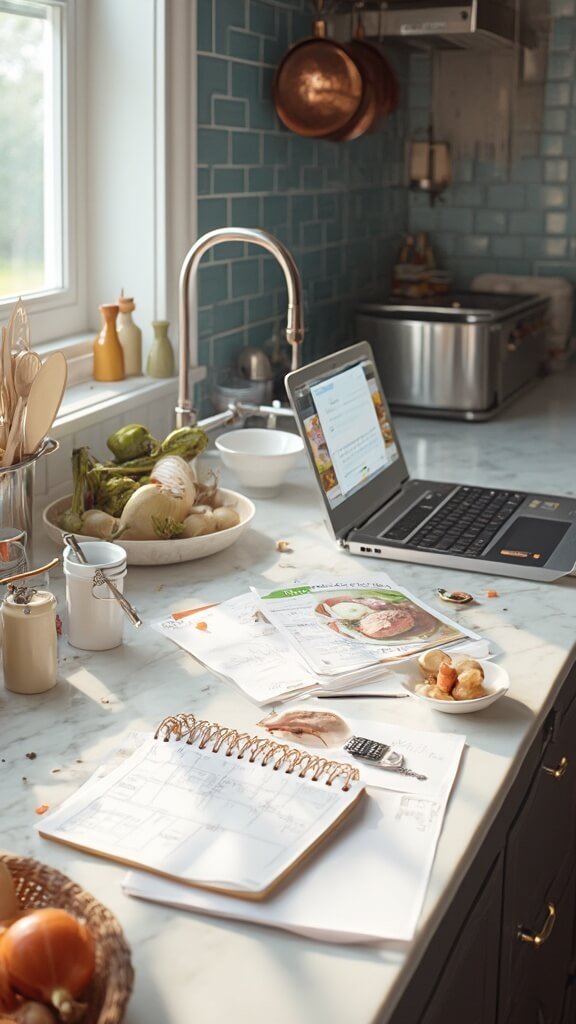
TITLE: Complete Monthly Meal Planning System – 12 Months of Budget Family Meals
KEY INFO
Total Cost: £200-£250 per month (family of 4)
Cost Per Portion: £1.75-£2.80
Ingredient Breakdown per portion:
- Proteins: £0.60-£1.25
- Grains: £0.15-£0.40
- Vegetables: £0.20-£0.60
- Seasonings: £0.05-£0.10
Prep Time: 1.5 hours monthly planning + 15 minutes daily
Cook Time: 20-40 minutes per meal
Total Time: Variable
Servings: 4-6 per meal
Difficulty: Easy to Moderate
Dietary Tags: Omnivore base, easily adaptable to vegetarian, vegan, gluten-free
Price Level: Very inexpensive to inexpensive
EQUIPMENT NEEDED
Essential Tools:
- Large skillet or sauté pan
- Medium saucepan and large pot
- Two baking sheets
- Sharp knife and cutting board
- Measuring cups and spoons
- Mixing bowls (various sizes)
Budget Alternatives:
- Use a large Dutch oven instead of slow cooker
- Mason jars replace expensive food storage containers
- Microwave for quick vegetable steaming
- Large spoon works instead of specialized serving utensils
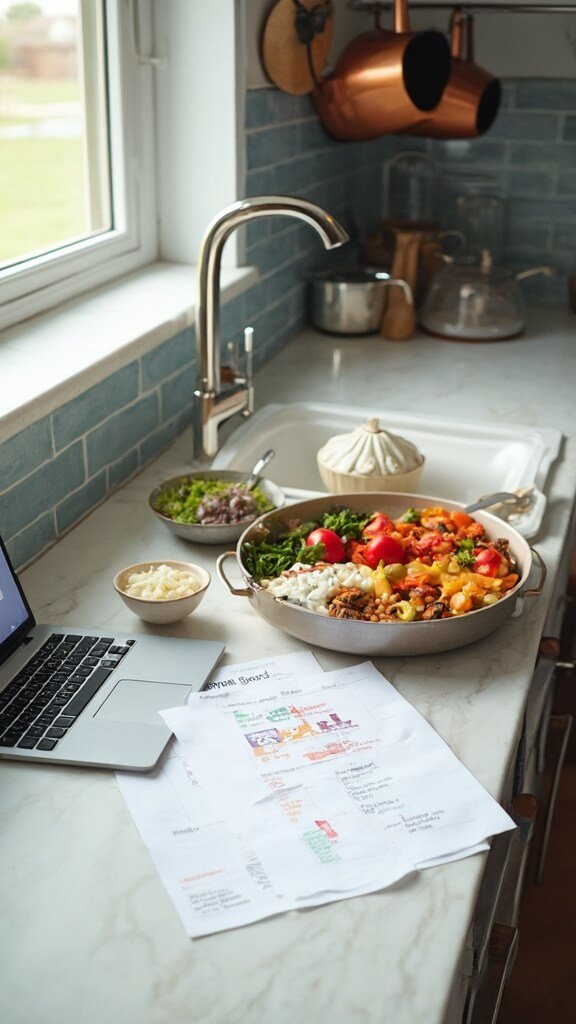
INGREDIENTS
Monthly Staples (adjust quantities for family size):
Grains:
- Rice, brown or white (2kg/4.4lbs)
- Pasta, various shapes (2kg/4.4lbs)
- Oats, rolled (1kg/2.2lbs)
- Bread or tortillas (as needed)
Proteins:
- Whole chickens (2-3 per month) [or chicken pieces if cheaper]
- Ground meat – beef, turkey, or pork (1kg/2.2lbs)
- Eggs (36-48 total)
- Dried beans/lentils (1kg/2.2lbs) [or canned equivalent]
- Tofu (optional, 4-6 blocks)
Vegetables (seasonal focus):
- Onions (2kg/4.4lbs)
- Carrots (1kg/2.2lbs)
- Potatoes (2kg/4.4lbs)
- Frozen mixed vegetables (2kg/4.4lbs)
- Fresh seasonal vegetables (varies by month)
Pantry Essentials:
- Cooking oil (vegetable or olive)
- Tinned tomatoes (6-8 tins)
- Stock cubes or powder
- Basic spices: salt, pepper, garlic powder, Italian seasoning, curry powder
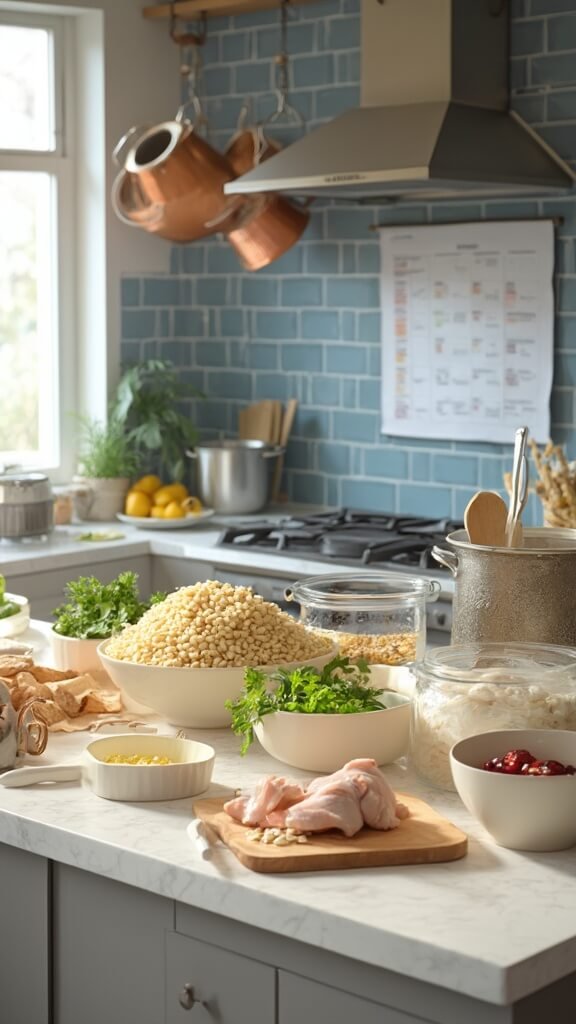
METHOD
- Choose your planning day – I recommend the last Sunday of each month. Clear your kitchen table and gather your calendar, store flyers, and notebook.
- Review your calendar first. Mark special occasions, busy nights, and days when you’ll need quick meals.
- Establish your monthly themes. Assign consistent days: Meatless Monday, Taco Tuesday, Pizza Friday.
- Plan around seasonal produce. January focuses on hearty root vegetables and citrus. July celebrates tomatoes, courgettes, and stone fruits.
- Map out your protein rotation. Week 1: Chicken-focused meals; Week 2: Bean and lentil emphasis; Week 3: Ground meat versatility; Week 4: Egg-based dinners and leftovers
- Schedule your batch cooking days. Choose two days monthly for preparing large quantities.
- Build in flexibility. Leave 3-4 meals per month as “wildcard” options.
- Create your shopping list by category. Organize by store layout and check your cupboards first.
- Prep immediately after shopping. Wash and chop vegetables, cook grains, and portion proteins.
- Start each week with a 15-minute reset. Review meals, thaw proteins, and do any extra prep.
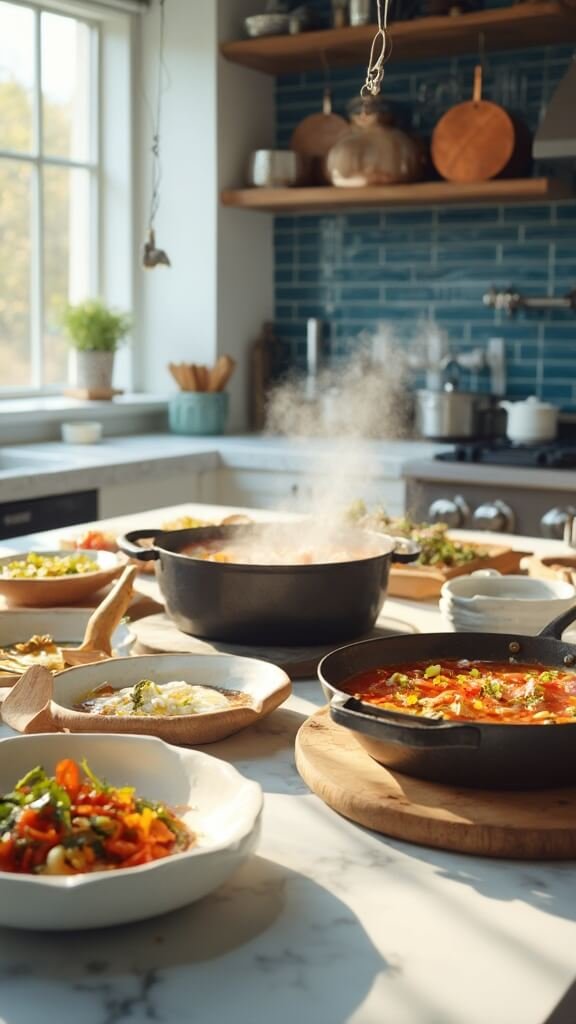
CRUCIAL TIPS
Money-Saving Strategies:
- Buy whole chickens and break them down yourself
- Dried beans cost 70% less than tinned
- Shop ethnic markets for spices
- Use end-of-day reduced produce
Time-Saving Shortcuts:
- Cook double portions and freeze half
- Pre-chop vegetables during TV time
- Keep emergency meals in your freezer
Common Mistakes to Avoid:
- Planning too many new recipes
- Forgetting to check your freezer
- Not accounting for family eating patterns
SEASONAL MONTHLY GUIDES
- January – Comfort Food Focus: Root vegetable stews, hearty soups, slow cooker meals.
- March – Fresh Start: More fresh vegetables, batch cooking for spring.
- June – Light and Fresh: Salads, grilled proteins, no-cook meals.
- September – Back to Routine: Kid-friendly meals, stock up on staples.
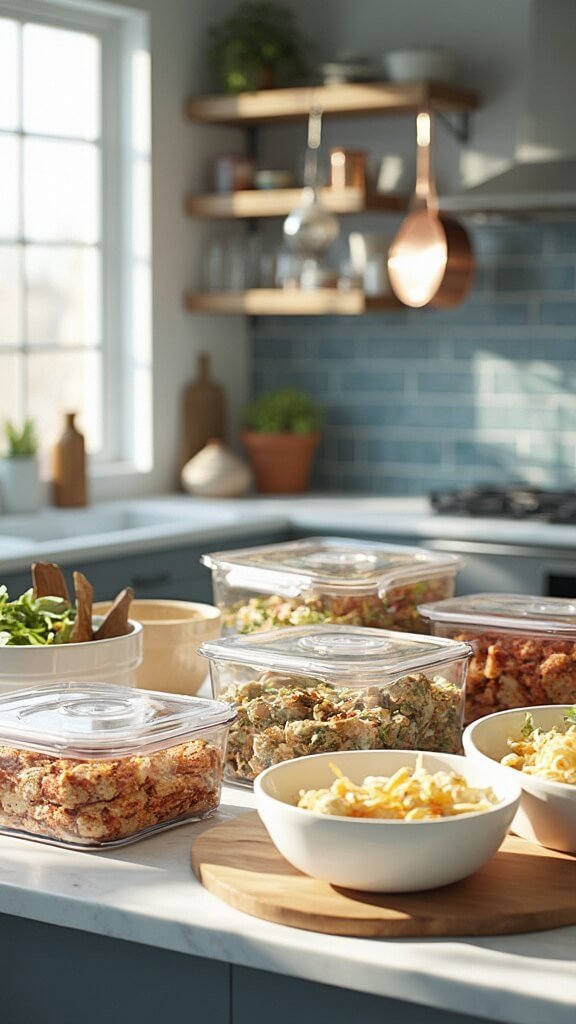
STORAGE AND SCALING
Storage Instructions:
Cooked grains: 5 days in fridge, 3 months frozen
Prepared meals: 3 days fridge, 2 months frozen
Label everything with contents and date
Scaling for Different Family Sizes:
- Solo/couple: Freeze in single-serving containers
- Large families (6+): Double grains/vegetables, increase protein by 50%
- Mixed ages: 1 adult = 1.5 child portions
Monthly Cost Breakdowns by Season:
- Winter: £220-£250
- Summer: £180-£220
- Spring/Autumn: £200-£240
VARIATIONS AND ADAPTATIONS
Dietary Modifications:
- Vegetarian: Use beans/lentils, eggs, dairy
- Gluten-free: Use rice, potatoes, certified GF grains
- Dairy-free: Coconut milk, nutritional yeast, olive oil
Cultural Theme Months:
- Mediterranean March: Olive oil, tomatoes, herbs, fish
- Mexican May: Beans, corn, peppers, lime
- Asian August: Rice, soy sauce, ginger, vegetables
This monthly meal planning system grows with your family and adapts to your changing needs.
Start with just one month planned ahead, then gradually work up to having three months mapped out.
The magic happens when you stop deciding what’s for dinner every single day and start following your thoughtful monthly plan.
Your grocery budget stabilizes, your stress decreases, and your family actually starts looking forward to meals again.
I’ve been using this system for three years now, and it’s revolutionized not just how we eat, but how we think about food in our home.
The best part? Once you have 6-8 different monthly templates created, you can rotate them with small adjustments for truly effortless year-round meal planning.
Your future self will thank you for starting this system today.

